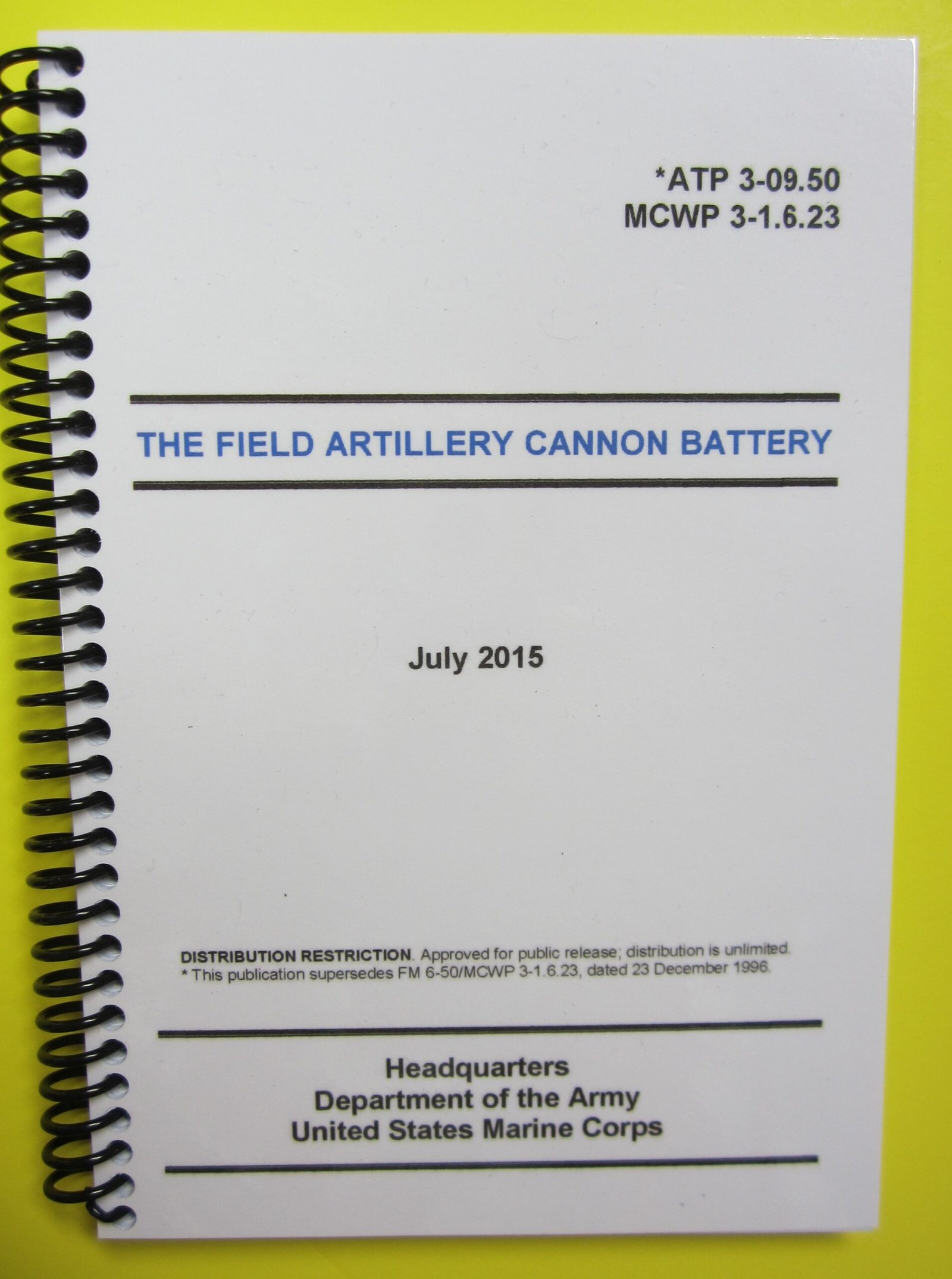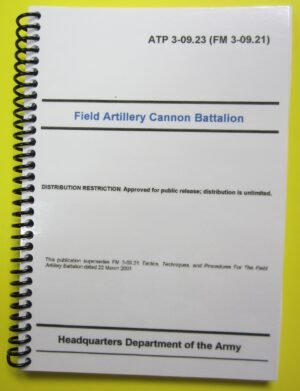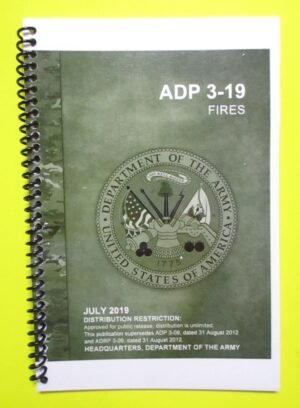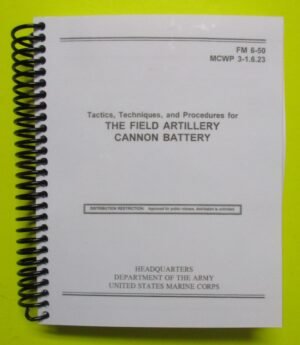Army techniques publication (ATP) 3-09.50 contains techniques — non-prescriptive ways or methods used to perform missions, functions, or tasks. These techniques and associated considerations for cannon batteries include those units operating as composite or distributed units.
The principal audience for this publication is all members of the profession of arms. Trainers and educators throughout the Army will also use this publication.
ATP 3-09.50 applies to the Active Army, Army National Guard, Army National Guard of the United States, and United States Army Reserve unless otherwise stated.
Introduction
Army techniques publication (ATP) 3-09.50 provides doctrinal guidance for commanders and subordinate leaders who are responsible for conducting cannon battery functions or tasks. It serves as an authoritative reference for personnel responsible for developing:
Doctrine (fundamental principles; tactics, techniques, and procedures) material and force structure.
Institution and unit training.
Tactical standard operating procedures for cannon battery units.
ATP 3-09.50 contains 12 chapters and 4 appendices:
Chapter 1 provides an overview and discussion of cannon unit organization and tactical duties of key personnel. The chapter discusses the transition from 2 firing batteries of 8 howitzers each to 3 firing batteries of 6 howitzers each in all brigade combat teams and the introduction of composite (mixed-caliber) battalions in Infantry brigade combat teams.
Chapter 2 discusses considerations for employing a cannon battery in various climates and terrain.
Chapter 3 provides an overview and discussion of techniques and associated considerations for reconnaissance, selection, and occupation of a firing position.
Chapter 4 considers techniques for laying the platoon or battery, and measuring and reporting data associated with the gunnery solution. The chapter covers use of the gun laying and positioning system, M2A2 aiming circle, M2 compass, and reciprocal laying by other howitzers.
Chapter 5 provides an overview and discussion of techniques and associated considerations for battery defense against armored or mechanized forces, air attack, dismounted attack, indirect fire, and chemical, biological, radiological, and nuclear attack.
Chapter 6 identifies the techniques and associated considerations for hasty survey.
Chapter 7 discusses the types, elements, and sequence of fire commands.
Chapter 8 provides a summary of the steps for computing minimum quadrant elevation.
Chapter 9 provides an overview and discussion of other considerations unique to composite units.
Chapter 10 provides a brief overview and discussion of techniques and associated considerations unique to cannon batteries operating as distributed units.
Chapter 11 discusses other considerations for cannon batteries operating as composite or distributed units – training, battery tasks, sustainment, communications, fire support, survey, and meteorological tasks.
Chapter 12 Identifies planning considerations associated with deployment as early as possible in the military decisionmaking process.
Appendix A provides techniques and associated considerations for precision munitions and ammunition management.
Appendix B identifies sample mission checklists.
Appendix C addresses techniques and associated considerations for overcoming common mistakes and malpractices.
Appendix D provides examples and discussion of required forms.
Appendix E discusses the declination of the aiming circle and the M2 compass.
Appendix F describes the employment of Killer Junior – the use of high explosive direct fire against dismounted attacks.
This book is a “Mini” (half the size of a piece of paper).
A popular size to carry anywhere (briefcase, large pocket, purse) but the print is large enough for easy reading. The binding is with coil, allowing easy flipping of pages without jamming.
The color covers are laminated for weather protection with black and white inside printing.
(A BIG size version (8 1/2 inch by 11 inch, the same size as a regular sheet of paper) is on this website too)





